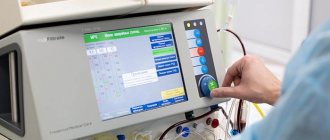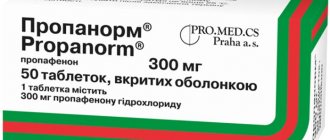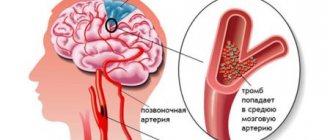With the development of a cerebral coma, a person completely loses contact with the outside world. This condition occurs after a hemorrhagic stroke or an extremely severe ischemic stroke. The onset of extreme coma means brain death. Milder degrees may result in the restoration of consciousness or the transition to vegetative regulation of vital processes. The prognosis for recovery is usually poor.
Causes of coma after a stroke
Signals from the outside world enter the brain through a special network of neurons called the reticular formation. It is responsible for the level of wakefulness, processes of excitation and inhibition in the central nervous system. During a stroke, this connection is destroyed due to:
- increased intracranial pressure;
- swelling of brain tissue;
- direct damage to stem cells;
- extensive focus of ischemia or hemorrhage in the cerebral hemispheres.
The most common cause of coma is a hemorrhagic stroke; it can begin with a severe loss of consciousness with a fatal outcome. Some patients experience a gradual progression of symptoms - from a state of stupefaction to the cessation of reaction to the environment.
Hemorrhagic stroke
The ischemic form of acute cerebrovascular accident leads to a coma only when a large arterial branch is blocked. Such patients, as a rule, have a recurrent stroke, there is no collateral (bypass) blood supply network, and widespread atherosclerotic vascular damage is noted.
We recommend reading about ischemic cerebral stroke. You will learn about damage to the left and right sides of the brain during a stroke, as well as damage to the brain stem. And here is more information about hemorrhagic stroke of the brain.
Principles of treatment
Stupor cannot be considered an independent deviation; it will necessarily indicate some kind of disorder occurring in the brain. Therefore, therapy is aimed at eliminating the causes that contribute to the depressed state.
The development of the soporous state is influenced by ischemia and swelling of the brain, which can occur under any circumstances. If treatment was started in a timely manner, complications associated with the brain can be avoided and neurons can also be preserved. If the treatment was inadequate, the symptoms of the disease will only intensify and can provoke a coma.
Treatment of stupor must be directed to:
- To eliminate swelling of the nervous tissue.
- To maintain normal blood flow in the brain
The blood sugar level must be corrected, the deficiency of microelements is compensated, the heart rhythm is restored, and renal and liver failure are treated.
If the patient has an infectious disease, he is prescribed antibacterial drugs. Hemorrhage must be eliminated first.
As for the prognosis, it will depend largely on the causes, depths and nature of damage to nerve tissue, as well as on the number of medical interventions.
The sooner the problem is identified and eliminated, the faster clear consciousness will be restored and unpleasant symptoms will be eliminated.
If stupor occurs as a result of an ischemic stroke, then the prognosis is quite favorable, if with a hemorrhagic stroke, in most cases it leads to death. If this disorder was caused by poisoning or metabolic processes, then the prognosis is favorable, but subject to timely assistance.
If the patient was provided with timely assistance and adequate treatment, then the chances of recovery are quite high.
Symptoms of change in condition
Expert opinion
Alena Ariko
Expert in Cardiology
The main sign of coma is closed eyes and lack of reaction to pain, sound, or light. This distinguishes it from all other types of loss of consciousness. The patient completely loses contact with the outside world, and no types of stimulation bring him out of this state.
Symptoms are determined by the degree of inhibition of higher nervous activity. Depending on the depth, there are several types of this severe stroke complication.
| Types of stroke complications | Description |
| Prekoma |
|
| First degree |
|
| Second degree |
|
| Third degree |
|
| Extreme coma (4 degrees) |
|
Degrees of coma
This condition can be divided into several degrees:
- The first degree is characterized by minor damage to the cellular structures of the brain with preservation of reflex functions. The patient is able to respond to pain, make contact and perform simple movements. The prognosis for survival in this case is guaranteed.
- Second degree - the presence of convulsions, noisy intermittent breathing, deep sleep with an absent response to pain indicates that the person is in a coma after a stroke.
- At the third stage, a drop in blood pressure and low body temperature are added to lost consciousness. Here the chances of survival are minimal.
- The fourth degree is incomparable with life, since all brain functions are disrupted. The patient's pupils are dilated, the temperature is critically reduced, there is complete muscle atony and intermittent irregular breathing.
Information: Scientists have proven the influence of depression in women on the development of stroke. And the constant use of antidepressants has an aggravating effect.
How many people are in a coma
The duration of the comatose state is very individual. It depends on the location and size of the focus of brain destruction, as well as the presence of concomitant heart lesions and the age of the patient. The minimum duration is 1 - 2 hours, and the maximum lasts several years with the transition of patients into a vegetative state, in which there is no activity of the cerebral cortex, but autonomic reflexes are preserved.
Despite the fact that after 6 months the patient’s return to full consciousness is practically impossible, he continues to be considered a living person who needs to maintain breathing and heartbeat. The longer the period of coma, the less chance of subsequent normalization of brain function.
Patient care and treatment
People in a coma need medical supervision and good care. The condition is observed in specialized neurological departments, where, if life-support functions are impaired, the patient is connected to artificial ventilation. Body parameters are recorded on the monitor, anticoagulants and nootropic drugs are prescribed.
Patients are fed through a specially installed tube. Liquid food, ground in a blender, is recommended.
Hygiene must be maintained; the patient's skin must be treated with special products to prevent bedsores. The oral cavity is cleaned with a damp cloth, the hair is washed regularly and combed daily. The patient needs to periodically change body position.
Reference: The dynamics of recovery processes after a stroke will be characterized by ups and downs. It is necessary to believe in a good result and not stop rehabilitation measures.
Prognosis after ischemic, hemorrhagic
Cerebral hemorrhage usually occurs in a more severe form. The mortality rate in such patients reaches 70%; even after removal of the hematoma, the rate is not much lower. Unfavorable factors include:
- breakthrough of blood into the ventricles of the brain;
- uncontrolled arterial hypertension;
- large volume of hematoma;
- progressive cerebral edema;
- signs of displacement of the stem part;
- acute heart failure;
- increase in creatinine content in the blood;
- convulsive syndrome, lack of consciousness, reactions to painful stimuli for more than 3 days;
- age after 70 years.
With ischemic stroke, a more benign course is observed; it is rarely accompanied by a profound impairment of consciousness. This happens with repeated vascular accidents, massive blockage of the brain arteries with cholesterol plaques, lack of treatment or complete disregard of doctors’ recommendations.
Blockage of arteries in the brain
Precoma and the first degree of coma can still give the patient a chance for recovery; with a higher degree, the prognosis is considered doubtful, and the onset of extreme coma is usually regarded as fatal.
Forecasts
In frequent cases, a stroke is diagnosed by emergency doctors who arrived on call and requires active resuscitation measures.
It is also necessary to remember that, according to statistics, a second stroke occurs in 5% of patients 3–5 days after the first, in 3% after a month, and to prevent it it is important to take the necessary medications, and may require surgical intervention.
To prevent falling into a coma, resuscitation procedures are performed through the same surgical intervention, which makes it possible to quickly and positively relieve the sufferer from this situation.
During the operation, bleeding is removed or the blood clot that caused the stroke is dissolved.
If the comatose state is actively approaching, the person loses consciousness, sleeps for about 6 hours or more, and the symptoms intensify, which leads to brain death. To make a correct prediction of the severity of the disease, an encephalogram is performed.
But there is reliable evidence that sometimes patients sleep for many months or years after a circulatory disorder. Such cases occur in 9% and are associated with the use of unexplored brain abilities. The younger the victim, the greater the chance of survival.
Consequences for the elderly
The prognosis for the recovery of brain activity in old age is much worse. After regaining consciousness, patients usually retain a neurological defect in the form of:
- decreased vision;
- loss of sensitivity;
- motor disorders - paralysis, convulsions, hyperkinesis;
- abnormal reflexes;
- disorders of speech function, mental health;
- persistent loss of memory, ability to self-care.
However, a final conclusion about the consequences of a coma after a stroke can only be made on the basis of a complete diagnosis, which includes ultrasound of the vessels of the head and neck, MRI or CT of the brain in combination with angiography.
Introduction to an artificial coma - why is it necessary?
Artificial coma is a last resort for stroke .
The procedure is carried out in order to slow down processes in the brain, including metabolism, thereby reducing swelling and compression. On particularly critical days for the patient, an induced coma becomes a substitute for anesthesia. After this, the main task of the medical staff is to help the patient get out of this state without negative consequences for the patient.
Dangers of induced coma:
- slowing of blood flow, complications in the functioning of the cardiovascular system, insufficient oxygen enrichment of the body;
- neurological disorders.
How to come out of a deep coma
If intensive resuscitation measures are started in time, a successful operation is carried out, and the lesion does not spread to neighboring areas, and cerebral edema is managed, then the patient begins to come to his senses. The process of restoring lost functions occurs in the reverse order:
- first the eyes open, the pupil reacts to light, the corneal reflex;
- the ability to swallow and feel pain appears, the patient can follow the movements of people or objects with his eyes;
- consciousness goes through the stages of stupor and stupor, delirium and hallucinations are often noted;
- convulsive seizures are possible;
- if the course is favorable, contact with surrounding people is restored.
The transition from a coma to a vegetative state is accompanied by the opening of the eyes to flashes of light, loud sounds, the patient may groan, but he does not have a conscious response to stimuli. The grasping, chewing and swallowing reflexes are preserved. Due to complete immobility, pneumonia, bedsores, and urinary infections often appear.
Restoration of brain functions (before the period of its complete death) occurs due to the following processes:
- transformation of stem cells into neurons;
- regrowth of processes of surviving cells;
- replacement of lost functions by neighboring areas of the brain.
We recommend reading about stroke surgery. You will learn about what kind of surgery is performed for hemorrhagic stroke of the brain, contraindications to surgery, as well as the consequences and prognosis for the patient. And here is more information about brainstem stroke.
Coma after a stroke develops in patients with extensive damage, more often with hemorrhage in the brain, signs of edema and dislocation of the brainstem. This complication has four degrees of severity, which further determine the prognosis for brain recovery. It is less favorable in older people.
Recovery from a coma occurs within an hour or several years. In this case, there may be a gradual awakening of consciousness or a transition to a vegetative state.
Duration
With a hemorrhagic stroke, the patient usually falls into a coma quickly. But the gradual slow development of coma during ischemic stroke is not uncommon. There are signs that precede a loss of consciousness.
These include:
- severe dizziness;
- the appearance of quiet and incoherent speech;
- drowsiness, frequent yawning;
- confusion ;
- blurred vision;
- pale skin;
- paresthesia in various parts of the body;
- rapid breathing;
- weakness ;
- sometimes - nausea and vomiting.
On this topic
- Stroke
6 reasons for stroke at a young age
- Natalia Sergeevna Pershina
- May 25, 2020
These symptoms can be used to recognize and, if not prevented, then significantly reduce the possible consequences and risks for the patient.
If we take averages, the coma state can last from two hours to two weeks, but sometimes it drags on for months or even years. The problem is that if oxygen does not enter the brain cells for more than a month, normal human functioning is no longer restored, and the consequences become irreversible.
Artificial coma
Sometimes, in order to prevent brain changes that pose a threat to the patient’s life, it is necessary to put him into a special, artificial coma after a stroke.
This is done in cases of severe compression of brain tissue, swelling, and extensive hemorrhages resulting from traumatic brain injuries. With the help of medications, the patient is immersed in a coma, which plays the role of anesthesia on the most dangerous days.
A long-term decrease in pain sensitivity makes it possible to constrict blood vessels, reduce the tension of cerebral blood flow and thus prevent the death of brain tissue. A high dose of medication is administered that has a depressant effect on the central nervous system and causes sedation. All manipulations are carried out in intensive care conditions.
On this topic
- Stroke
7 facts about ischemic stroke of the right hemisphere of the brain
- Natalia Sergeevna Pershina
- May 25, 2020
An induced coma can be long-lasting, so constant monitoring of the patient's condition is necessary. The smallest reactions to stimuli, the weakest movements may indicate the likelihood of a return of consciousness. In this case, the main task of doctors is to help with exit.
Side effects of sedation may include:
- complications from the respiratory system;
- vascular disorders;
- kidney complications ;
- various types of neurological pathologies.
Despite this, an induced coma often gives a person an additional chance to live.











